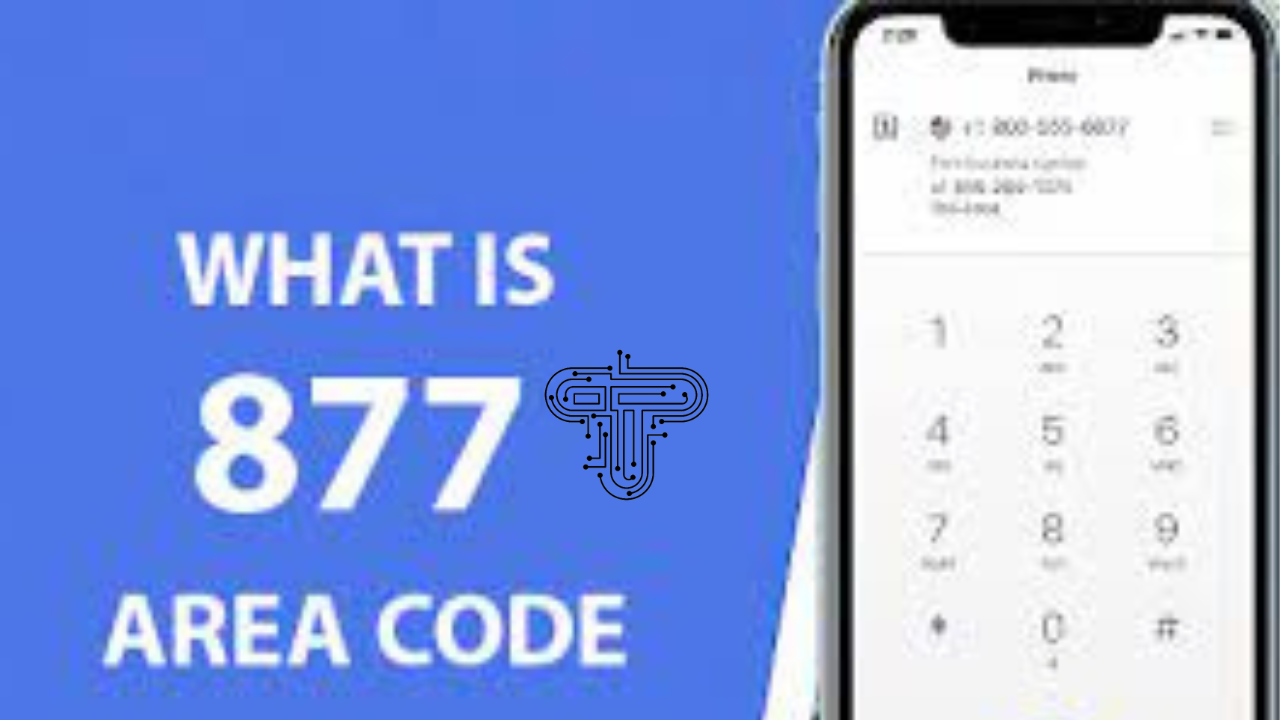Understanding the 877 Area Code: What You Need to Know
Area codes play an essential role in the telephone numbering system, helping to identify specific regions or types of services within a country. In North America, area codes are used to distinguish between geographic regions for landlines and mobile phones, as well as for toll-free numbers. The 877 area code is one of the critical toll-free area codes in the United States and Canada. This article will explore the origins, purpose, and significance of the 877 area code, how it works, and what you should know if you receive or make a call with this number.
What is the 877 Area Code?
The 877 area code is one of several toll-free codes in the North American Numbering Plan (NANP). Unlike geographic area codes tied to specific locations, toll-free area codes are designated for business, customer service, and other services that allow callers to reach businesses or organizations without incurring charges. The charges for these calls are borne by the party receiving the call rather than the caller. This makes it a preferred method for businesses that want to offer convenient, cost-free communication with customers.
Alongside the 877 area code, there are six other toll-free area codes in the U.S. and Canada: 800, 833, 844, 855, 866, and 888. These toll-free numbers are vital for businesses, allowing them to appear more professional and providing easy access to customer service departments without cost to the consumer.
While the 877 area code may appear similar to local or long-distance numbers, it serves a unique function by designating calls as toll-free and routing them to the proper destination. Businesses, government agencies, and other organizations use the 877 area code for customer support lines, hotlines, and service desks.
The History of Toll-Free Numbers and the 877 Area Code
The concept of toll-free numbers was first introduced in the U.S. in 1967 by AT&T. Initially, the 800 area code was the only toll-free option available. These numbers were intended to replace collect calls, which required the recipient to accept the charges for a long-distance call. Toll-free numbers revolutionized communication, especially for businesses, making it more accessible for customers to contact companies without worrying about the cost.
As the demand for toll-free numbers increased, the supply of available 800 numbers became exhausted. To address this shortage, additional toll-free area codes were created. The first expansion came in 1996 with the introduction of the 888 area code. Over the years, other toll-free area codes were added, including 877, which was introduced in 1998.
Today, toll-free numbers, including those with the 877 area code, are widely used by businesses of all sizes. The evolution of toll-free numbers has allowed companies to maintain national or even international reach while offering a simple, accessible means of contact for their customers.
How Toll-Free Numbers Work
Toll-free numbers, such as those beginning with the 877 area code, are part of a system where the business or organization that owns the number pays for the incoming calls. Instead of charging the caller for a long-distance call, the receiving company covers the costs. This makes it easier for customers to reach businesses without worrying about charges, which can enhance customer satisfaction and engagement.
When a call is made to a toll-free number, the call is routed through a carrier, which then bills the business or organization for the call. The routing process for toll-free numbers differs from standard phone numbers in that the call is forwarded to a local or long-distance number chosen by the company. This allows the business to centralize its customer service operations or outsource it, with calls from anywhere across North America routed to one or multiple answering points.
Toll-free numbers are also portable, meaning a business can change service providers or locations without changing their toll-free number. This is especially beneficial for companies that want to maintain a consistent and recognizable contact number for their customers over the long term.
Why Businesses Use the 877 Area Code
There are several reasons why businesses choose to use toll-free numbers with the 877 area code. The primary reason is the customer-friendly nature of toll-free calls. By offering a toll-free number, businesses remove a potential barrier to communication, encouraging more customers to reach out for support, inquiries, or orders.
Here are some of the main benefits for businesses using the 877 area code:
- Enhanced Professionalism: A toll-free number gives businesses, especially small or growing enterprises, a more professional and national presence. This is especially important for companies that want to attract customers from across the country or region without having a physical presence in each area.
- Increased Accessibility: By eliminating the cost of customer calls, businesses make it easier for individuals to get in touch. This is particularly important for customer service departments, helplines, and technical support.
- Brand Recognition: A memorable toll-free number can become vital to a company’s brand identity. When people associate a specific toll-free number with a business, it reinforces the company’s name and improves brand recognition.
- National Reach: With a toll-free number, businesses are not tied to a specific location. This can help expand the customer base, allowing companies to cater to a broader audience without being limited to their local area.
Common Uses for the 877 Area Code
The 877 area code is widely used for various purposes, particularly by businesses, organizations, and government entities prioritizing customer communication. Below are some of the most common uses for 877 numbers:
- Customer Service Hotlines: Companies often use 877 numbers to provide toll-free customer service support. Customers can call these numbers to ask questions, resolve issues, or make inquiries without worrying about the cost of the call.
- Order Lines and Sales: Many businesses use toll-free numbers to facilitate orders and sales inquiries. Customers can easily place orders over the phone without incurring costs, boosting sales and improving customer satisfaction.
- Technical Support: Technology companies, internet service providers, and other tech-related businesses often offer toll-free technical support lines through the 877 area code. This ensures that customers can get help without being concerned about long-distance charges.
- Government and Nonprofit Services: Government agencies, charities, and nonprofit organizations also use toll-free numbers to provide services and information to the public. These organizations aim to make their services accessible; toll-free numbers help them achieve this goal.
- Hotlines and Helplines: Various hotlines for emergencies, counselling, and support services use 877 numbers. These numbers are vital for ensuring needy individuals can access help without financial burden.
Differences Between Toll-Free Area Codes
While the 877 area code functions the same way as other toll-free area codes like 800, 888, and 866, there is no functional difference other than the digits used. All toll-free area codes provide the same service, allowing callers to reach businesses or organizations without being charged for the call. However, from a branding perspective, companies may prefer specific toll-free area codes over others based on availability or memorability.
For example, 800 is the original and most recognizable toll-free area code, and as a result, these numbers are often seen as more prestigious or desirable. However, as 800 numbers become scarce, businesses may opt for other toll-free options, such as 877, which still offer the same functionality but may be easier to obtain.
How to Obtain a Toll-Free Number with the 877 Area Code
Businesses interested in securing a toll-free number with the 877 area code must follow several steps. First, they must contact a service provider or carrier that offers toll-free number services. These providers can help businesses select an 877 number and set up the necessary routing and billing processes.
It is essential to choose a number that is easy for customers to remember. Some businesses opt for vanity numbers, which use letters corresponding to the numbers on a phone keypad to spell out a word or phrase related to the industry. For example, a plumbing company might choose a number like 1-877-PLUMBER, making it easier for customers to recall.
Read More
Conclusion
The 877 area code is vital to the North American telephone system, offering businesses and organizations an efficient, cost-effective way to communicate with customers. By understanding how toll-free numbers work, their history, and their benefits, companies can make informed decisions about incorporating 877 numbers into their communication strategies. Whether for customer service, sales, or support, toll-free numbers are essential in fostering solid and accessible connections between companies and their customers.







